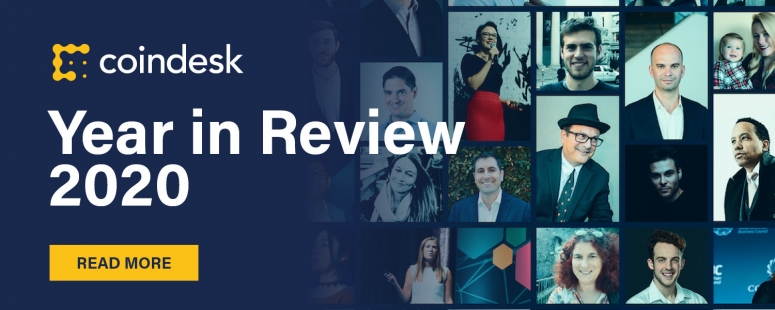After a crazy year with predictably strong growth in decentralized finance (DeFi) and store-of-value (SoV) crypto assets generally, things are about to get weird. Diversification is the only way to stay sane.
Crypto is set to bifurcate and we will begin to see two parallel economic superhighways being built and used. One economic superhighway will be for know your customer (KYC)-compliant “digital currencies” such as central bank digital currencies (CBDC) or corporate-backed digital currencies such as USDC or diem (formerly libra).
This post is part of CryptoX’s 2020 Year in Review – a collection of op-eds, essays and interviews about the year in crypto and beyond. Ryan Zurrer is founder of Dialectic AG, an alternative-assets focused multi-family office. Previously, he was a Director at the Web3 Foundation and led the investment team at Polychain Capital, pioneering the SAFT as a legitimate investment instrument.
In parallel, the other economic superhighway will be a detour-filled adventure of crypto-anarchist money Legos being stacked and iterated on by anonymous teams, self-organized via a myriad of DAO-like governance structures. It’s all about to get quite strange. Diversification is the only coherent path forward both within crypto ecosystems and beyond during these uncertain times.
Lessons learned
A defining narrative of 2020 was the DeFi space, mostly within the Ethereum ecosystem. In spite of the silly food memes and 1990s-inspired user interface, DeFi is dominated by stone-cold professionals executing platform-agnostic “mercenistic mining”. It is interesting that, contrary to the irrational and outdated maximalism we see among layer 1 enthusiasts, the application layer, led by DeFi, is proving to be decidedly non-sticky and transient. The cost of switching between platforms is negligible (when gas fees are not outrageous due to network congestion) and participants follow the risk-adjusted yield.
DeFI darlings such as Uniswap, Compound and Curve all saw dramatic drops in value locked on their platforms when anonymous, community-led alternatives attacked, offering better financial terms to liquidity providers. The back-and-forth liquidity war between SushiSwap and Uniswap demonstrates a remarkably quick race to near-perfect competition and offers a purview of just how fast DeFi is evolving. Being first and having scale matters less than the “4 Is”: iteration, community inclusion, compelling incentives and competitive interest (both interest rates to liquidity providers alongside interest in the project at hand).
While we at Dialectic were quietly attending to our DeFi farms like proper Swiss farm boys and playing around with for-profit DAOs and yield strategies, large corporates and central banks took the most significant steps to date towards central bank and corporate-enabled digital currencies. We saw the largest digital currency experiment ever quietly unfold, lead by rapidly developing BRIC countries of Brazil, Russia, India and China. Multiple cities and more than 100 million people tested China’s CBDC using WeChat and JD.com, making it instantly the most widely used crypto-asset ever. Subsequently, Brazil launched into production its own proof-of-authority distributed ledger called Pix, making instant digital transactions available to hundreds of millions of banked citizens.
Other central banks initiated exploratory studies and publicly discussed their projects in earnest for the first time. Look for CBDCs to be a prime topic at the forthcoming WEF Forum in Singapore (replacing Davos for 2021). China has now unquestionably started the early phase of its challenge for reserve currency status. Rest assured that its CBDC is China’s Trojan Horse towards the goal of reserve currency status within the 2020s.
2021
In 2021, we are going to see layer 2 apps for the first time and not only to entertain or as early experiments. We will see entire micro-economies emerge and transform thousands of people’s lives. Right now there are tens of thousands of digital workers in cities like Manila playing Axie Infinity professionally and earning a better wage than their now-defunct pre-COVID occupation. It has become a cultural phenomenon and will spawn a range of novel worker’s guilds and decentralized capital pools seeking compelling yield, thus merging the concepts of nonfungible tokens (NFT) and DeFi.
As we move into 2021, users and entrepreneurs will continue to face the dilemma of what economic superhighway they want to build on, crypto-native or centralized-corporate.
In 2021, we’ll see more anonymous teams governed by DAOs popping up and experimenting with exotic derivatives and porting real-world assets on-chain with NFTs. With next year being the 25th anniversary of Pokémon, it’s fitting that the next generation of collectible games will have such depth of meaning, financial complexity, and global impact.
Layer 2 will also usher in crypto’s own “SoMo” (social + mobile native) moment, whereby applications will look to be native and seamless on many of the apps that billions of users already have on their home screen: WeChat, WhatsApp, Facebook, the App Store and so on. This is where corporate-cryptos and CBDCs will have a clear advantage and will foster significant innovation. We’ll see the backers of CBDCs and corporate-cryptos spend lavishly to seed ecosystems of layer 2 app development.
Consolidation
We’ll continue to see consolidation between crypto projects. Recently, we’ve seen early signs of the oncoming “Banker era” in crypto as projects acquire, merge and dissolve as in M&A transactions. Yearn consolidated a host of platforms under its umbrella in what appears to be a set of highly accretive transactions for YFI holders. Meanwhile, Aragon re-integrated Aragon Court in a complete acquisition to fit as a central pillar in a value-accrual mechanism called Aragon Protocol. However, watch out for more consolidation among DeFi competitors and layer 1s in 2021.
See also: Marcelo Prates – The Big Choices When Designing Central Bank Digital Currencies
DeFi yield strategies will begin to stack on one another combining debt, exchange and derivative strategies under unified liquidity while novel layer 1 experiments, often branded abhorrently as “Eth Killers” will ironically need to combine teams, treasuries and economically rebase to survive against Ethereum’s accelerating network effects, community and composability. We’ll also see an acceleration in “treasury raids” as protocols with enormous sums of money leftover from the 2017 initial coin offering (ICO) era are pressured by their token holders to pay a dividend, tie the treasury to the token or unwind and distribute the funds back to project funders.
Corporate digital currencies
For those who got into crypto because of ideals like freedom and self-sovereignty, 2021 will feel Orwellian. We’re likely to see a significant portion of the space migrating to FATF-compliant regulations regarding KYC/anti-money laundering and primarily transacting in centralized digital currencies as the fight for self-custodial wallets evolves from a skirmish to all-out conflict.
I would strongly encourage everyone to remain open-minded about the innovation that CBDCs and corporate currencies will bring. While it seems weird and hypocritical to build an entire decentralized software stack and then just give the keys back to a bank or centralized authorities, these projects will drive adoption beyond what we’ve achieved thus far and that are very important.
Extremism is not a good basis to allocate your capital, your attention or your most important resource, your time.
Even as we celebrate the price appreciation of the second semester of this year, I continue to hear concerned whispers around the space that organic user growth has slowed precipitously. Let’s face it, “the masses” we’ve been waiting so patiently for, and really need for the next big step in this space, have not arrived in droves and won’t just because of new all-time highs in some currencies that are primarily owned by a few early insiders. Ironically, in the end, the best thing for crypto may be to embrace bridges between the crypto-anarchist and fully compliant economic super-highways.
As we move into 2021, users and entrepreneurs will continue to face the dilemma of what economic superhighway they want to build on, crypto-native or centralized-corporate. The infrastructure between these super-highways will be interesting areas of opportunity.
Embracing innovation and new experiments is the only coherent path forward. Maximalism has never, in the history of this industry, been the optimal strategy and it certainly won’t be going forward. Extremism is not a good basis to allocate your capital, your attention or your most important resource, your time. Diversification of geographies, currencies and assets matters more now than ever before, and keeping an open mind to how the future may unfold is clearly the optimal strategy as we move forward into the next decade of crypto.





